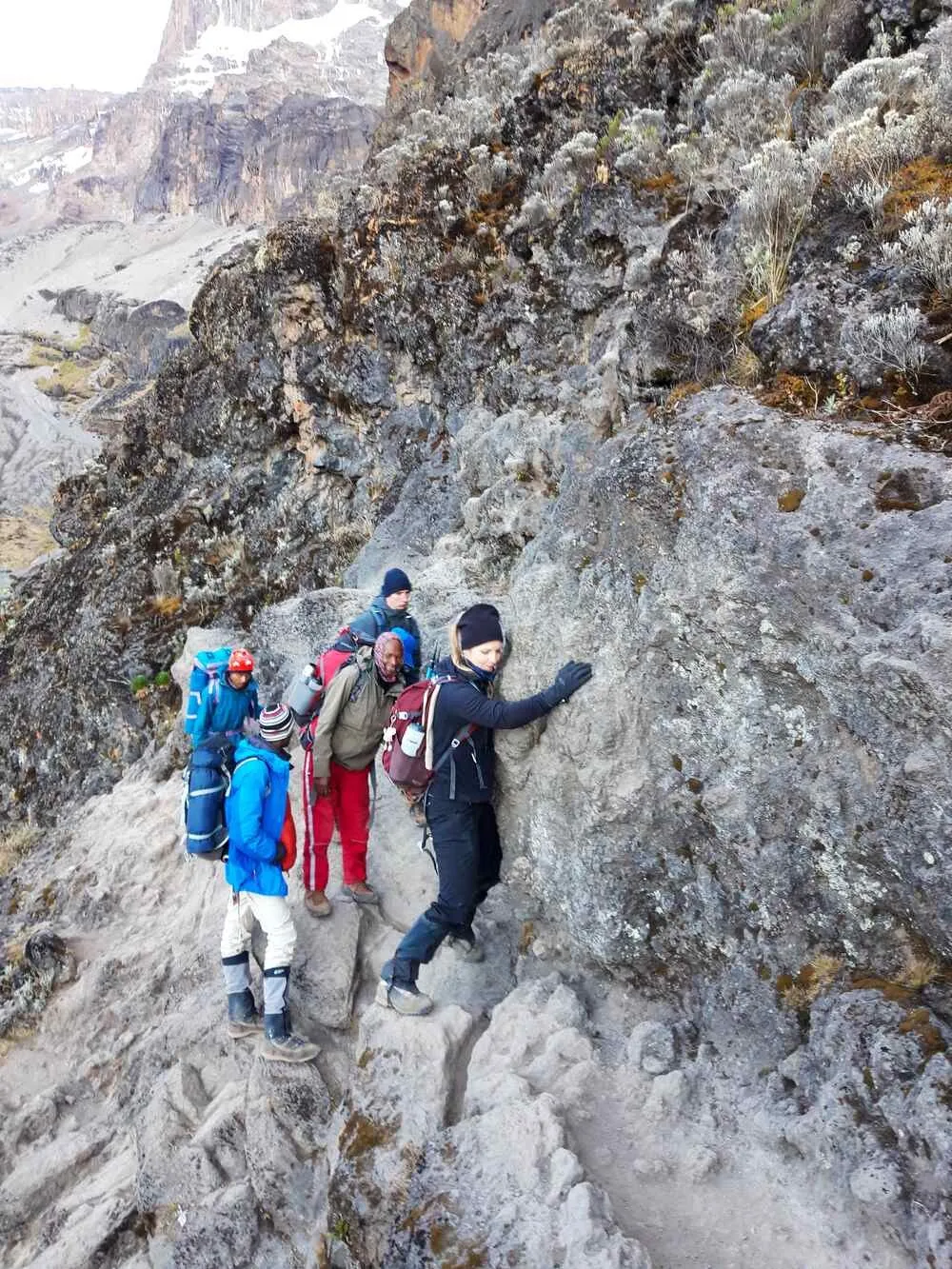6 Day Machame Route – Kilimanjaro Climb Package
The 6 day Machame Route is one of the most scenic and popular ways to climb Mount Kilimanjaro. Known as the "Whiskey Route," it’s perfect for those seeking adventure and varied landscapes. With steeper sections and more ups and downs, it offers a more challenging and visually rewarding trek compared to the Marangu Route.
This route allows for better acclimatization with a climb high, sleep low strategy. Though more demanding, it boasts higher success rates and dramatic views throughout—from rainforest to alpine desert and glacier fields.

At a Glance
-
Duration: 6 Days on the mountain
-
Route Type: Tent camping
-
Start Point: Machame Gate
-
End Point: Mweka Gate
-
Difficulty: Moderate to challenging
-
Scenery: Rainforest, moorland, alpine desert, glaciers
-
Best For: Adventure seekers, photographers, and climbers wanting high success rates
Detailed Itinerary – 6 Day Machame Route
Day 1: Machame Gate to Machame Camp
Your journey begins at Machame Gate. Hike through lush rainforest, home to wildlife like monkeys and colorful birds. Reach Machame Camp by late afternoon and enjoy your first night under the stars.
Day 2: Machame Camp to Shira Camp
Trek through heather and moorland zones. The trail climbs steeply, offering great views of the Shira Plateau and Kibo Peak.
Day 3: Shira Camp to Barranco Camp via Lava Tower
Ascend to Lava Tower at 4,630m for acclimatization, then descend to Barranco Camp. This climb high, sleep low day improves adaptation to altitude.
Day 4: Barranco Camp to Barafu Camp
Climb the famous Barranco Wall—a thrilling, non-technical scramble. Cross several valleys before reaching Barafu Camp to rest before summit night.
Day 5: Summit Day – Barafu Camp to Uhuru Peak, then descend to Mweka Camp
Start the final ascent around midnight. Pass Stella Point before reaching Uhuru Peak, the highest point in Africa. After celebrating, descend to Mweka Camp for overnight rest.
Day 6: Mweka Camp to Mweka Gate
A short descent through the lush rainforest. At the gate, you’ll receive your summit certificate and meet your transfer back to your hotel.
What's Included
-
All Kilimanjaro National Park fees
-
Tent accommodations and camping gear
-
Professional guides, porters, and cook
-
All meals on the mountain
-
Drinking water and hot beverages
-
Rescue fees
-
First-aid kit and oxygen cylinder
-
Pre- and post-trek briefing
-
Transfers to/from Machame Gate
-
Summit certificate (gold for Uhuru, green for Stella Point)
What's Not Included
-
International flights and visas
-
Travel insurance
-
Tips for crew
-
Personal trekking equipment
-
Pre/post trek accommodation (available on request)
-
Extra snacks and drinks
-
Portable toilet (available at extra cost)
